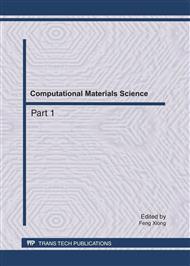p.322
p.326
p.332
p.336
p.340
p.345
p.351
p.356
p.360
Study on Adsorption of CaCO3 in Metal Surface Based on Electrochemical Techniques
Abstract:
The study of calcium carbonate adsorption is important significance to understand the fouling mechanism that is a major component of heat exchanger fouling. The influence on the adsorption of CaCO3 crystallization fouling was researched in different material, roughness and supersaturation by the electrochemical impedance-time method. The results show that the material is not the essential influence on CaCO3 absorption by analyzing the CaCO3 adsorption layer data. The optimum conditions of maximum adsorption CaCO3 quality: the roughness of the electrode polished by the sandpaper of 360 mesh, the supersaturation of 0.291g / L CaCO3 solution. The experimental results of supersaturation are concordant with the roughness experiments. When the supersaturation is the middle value, the maximum adhesive force can reach the maximum. So the regulation of calcium carbonate supersaturation and roughness of heattransfer equipment can prevent the fouling. This study is a powerful detecting method to research the influence of the roughness on the adsorption of CaCO3 crystallization fouling.
Info:
Periodical:
Pages:
340-344
Citation:
Online since:
July 2011
Authors:
Keywords:
Price:
Сopyright:
© 2011 Trans Tech Publications Ltd. All Rights Reserved
Share:
Citation:


